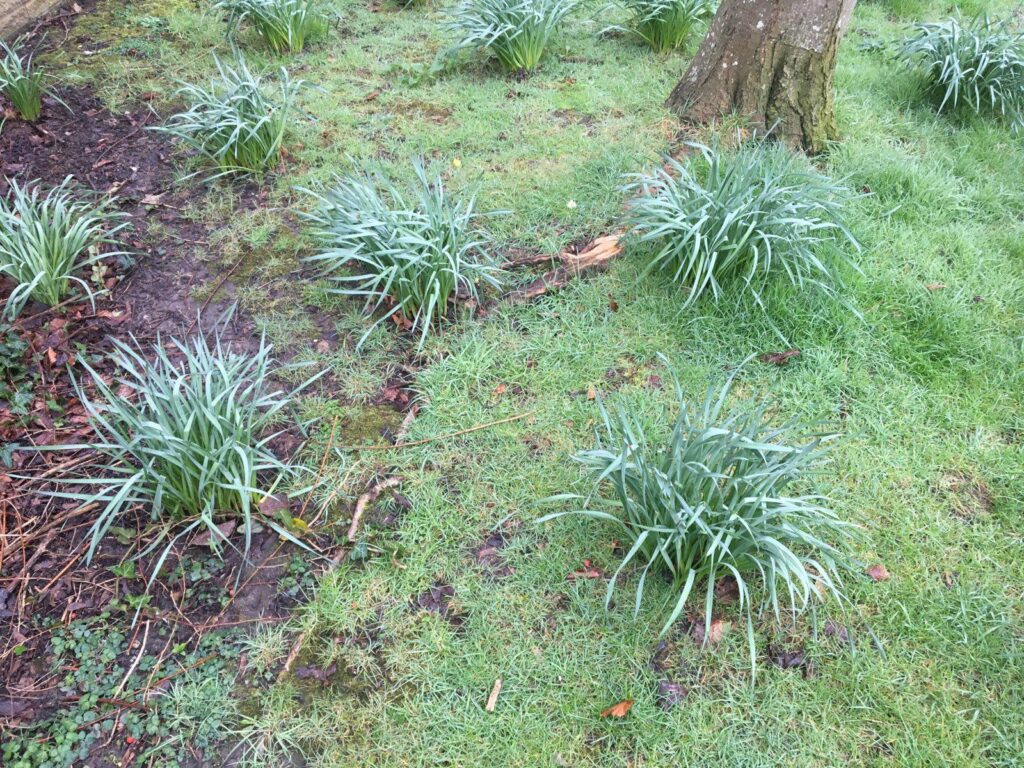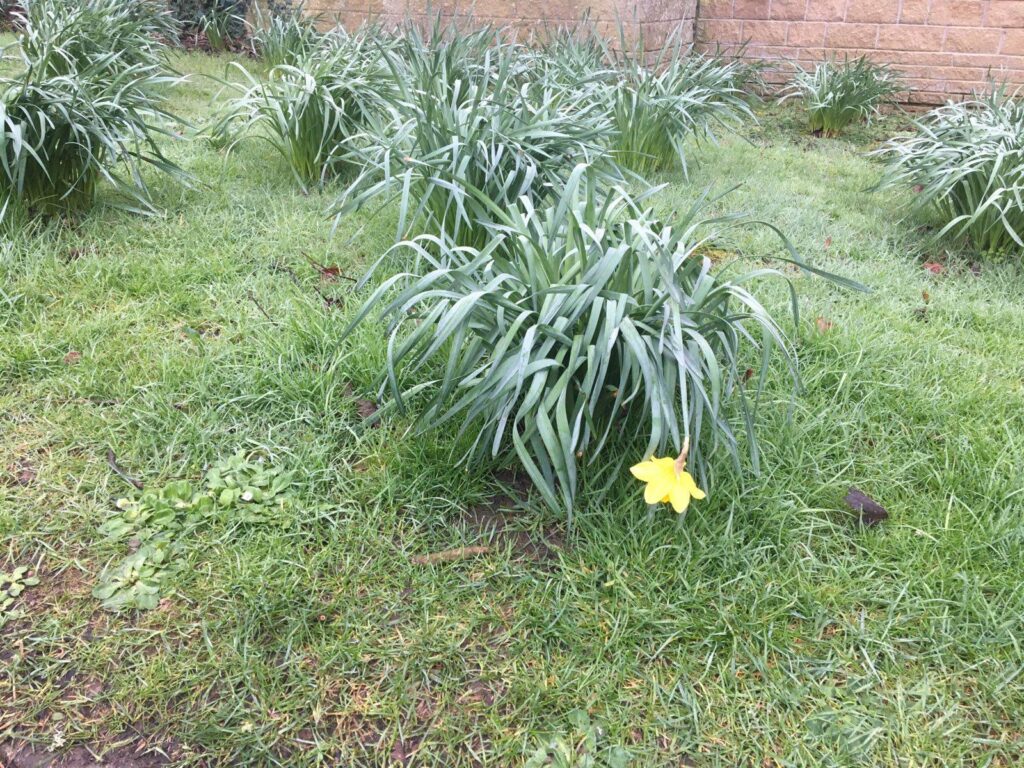Daffodils (Narcissus) are perennial bulbs whose lifespan varies depending on the particular species and cultivar, the growing conditions and care, or lack thereof!
With the correct selection of Narcissus and proper care, you can expect individual bulbs to come back for several years. Before an individual bulb perishes, it is a common sight to see their glossy strap-like leaves emerge as lush as ever, but with no flower. This is called ‘daffodil blindness’, or ‘coming up blind’.
When it happens to entire clumps of daffodils, it looks like this, taken right at the start of March when daffodils should be very much in flower:

It’s even sadder when one lonely trumpet manages to pop:

How to Diagnose the Cause of Daffodil Blindness
If this is happening to you, and you do know the history of your daffodils, it’s usually easy to work out what’s wrong with them.
But if you inherited blind daffodils or are working on someone else’s garden you’ll need to examine several possibilities, so we’ll start with the easiest things to check first.
Daffodils only tolerate light, dappled shade
While daffodils don’t need full sun to flower well and can thrive in light, dappled shade under a thin canopy of deciduous trees, they won’t do well for long in a shady, North facing site where the low Spring sun can’t possibly give them enough light.
Improper Planting Depth
Daffodil bulbs should be planted at a depth of about 3-4 times their height, and a little too deep is better than a little too shallow.
Shallow planting in particular tends to cause bulbs to multiply underground into lots of small bulbs that can only manage to produce leaves.
The Clump is Old, Congested, and Needs Dividing
It may be that your bulbs reproduced so successfully in the past that they have become overcrowded, leading to over-competition for nutrients and space.
If you know that your bulbs have done well, make a plan to lift them after the foliage dies down, store them over summer, and then distribute them around the garden in Autumn.
Daffodils require fertile soil
Fertile soil means organic matter, so mulching the area around your bulbs is good, and for naturalising bulbs in lawns where mulching is not possible, a light feed after flowering is great.
Another essential feature of fertile soil is moisture.
Britain is typically rainy in Spring, so daffodils don’t usually suffer from dry soil when they are still in leaf, but if they do dry out before the leave die down naturally then the negative effect on flowering is about the same as cutting off the leaves too early.
Removing Leaves too Early the Previous Year
The poor practice of removing or tying up (knotting) a bulb’s foliage prematurely prevents it from storing up the energy it needs to flower the following year.
Pests and diseases (relatively uncommon)
Daffodil pests and diseases aren’t that common in the garden. They tend to affect commercial growers (who might have zillions of daffodil bulbs in a field and nothing else, creating ideal conditions for pests).
There are two pests, Narcissus bulb fly and narcissus eelworm, and two diseases, narcissus basal rot and daffodil viruses, to look out for: they all can cause daffodil blindness.
The first three possibilities (bulb fly, eelworm, basal rot) all cause different patterns of clearly visible brown & dead tissues in the bulb itself when you cut one open.
Daffodil viruses, however, cause yellowish streaks in the leaves that are not always easy to see, especially on young foliage.
